Economy

Consumer Confidence Up Again in September
Written by Peter Wright
September 5, 2018
Consumer confidence surged again in September to its highest level since September 2000, according to The Conference Board’s Consumer Confidence Survey. The composite value of consumer confidence in September was 138.4, up from 134.7 in August. The three-month moving average (3MMA) increased from 129.9 in August to 133.6 in September, which was 13.3 points higher than in September last year. We prefer to smooth the data with a moving average because of monthly volatility, which in the case of consumer confidence has been quite extreme since the beginning of 2016. The composite index is made up of two sub-indexes. These are the consumer’s view of the present situation and his or her expectations for the future. Both are above their nine-year trend line and both are trending up (Figure 1).
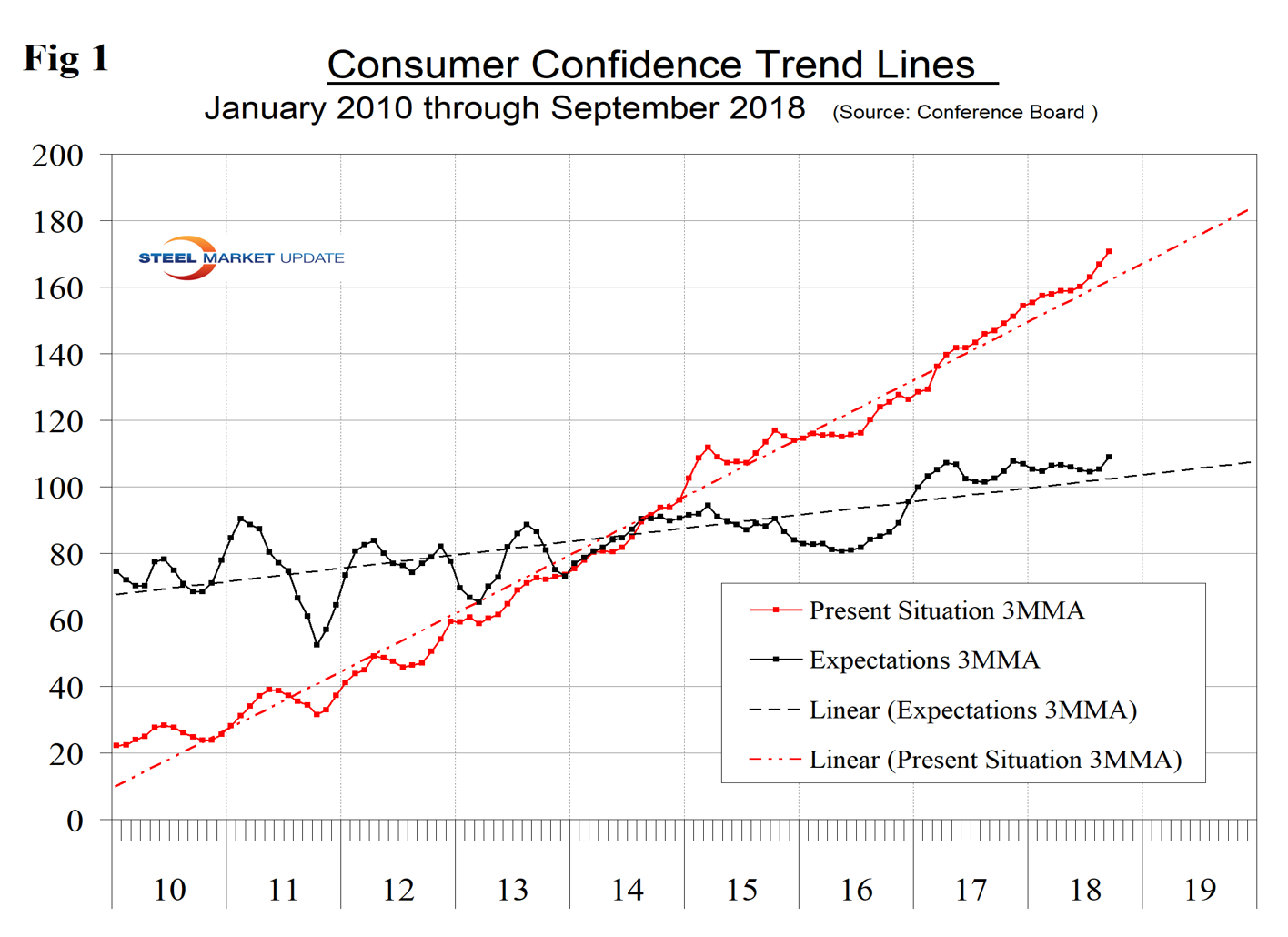
The historical pattern of the 3MMA of the composite, the view of the present situation and expectations since January 1990 are shown in Figure 2.
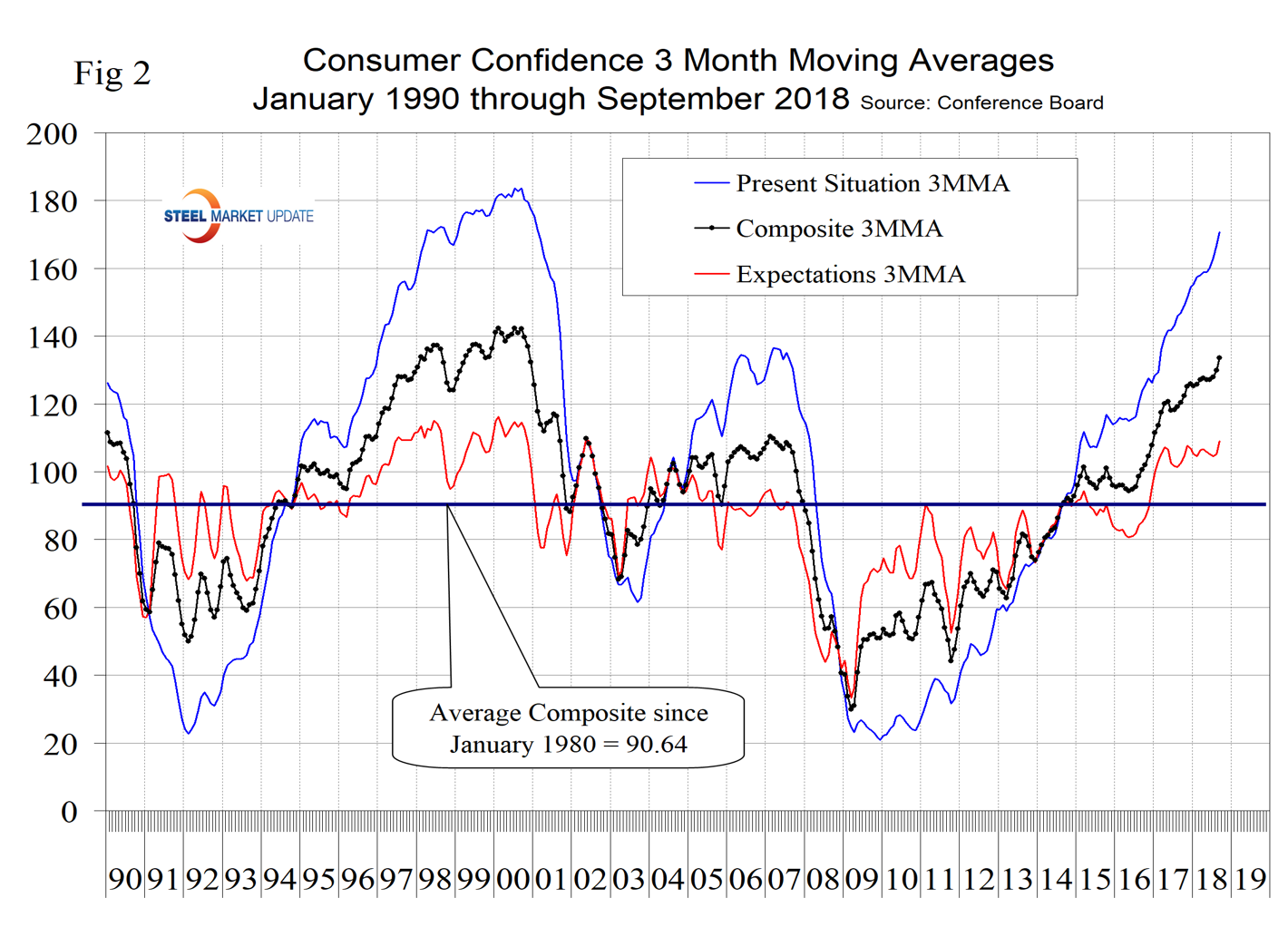
All three measures are higher than they were at the pre-recession peak of 2007. Expectations have been relatively constant for over a year, but the consumer’s view of the present situation has been surging since December 2010. Comparing September 2018 with September 2017, the 3MMA of the present situation was up by 23.8 and expectations were up by 6.4 points (Table 1).
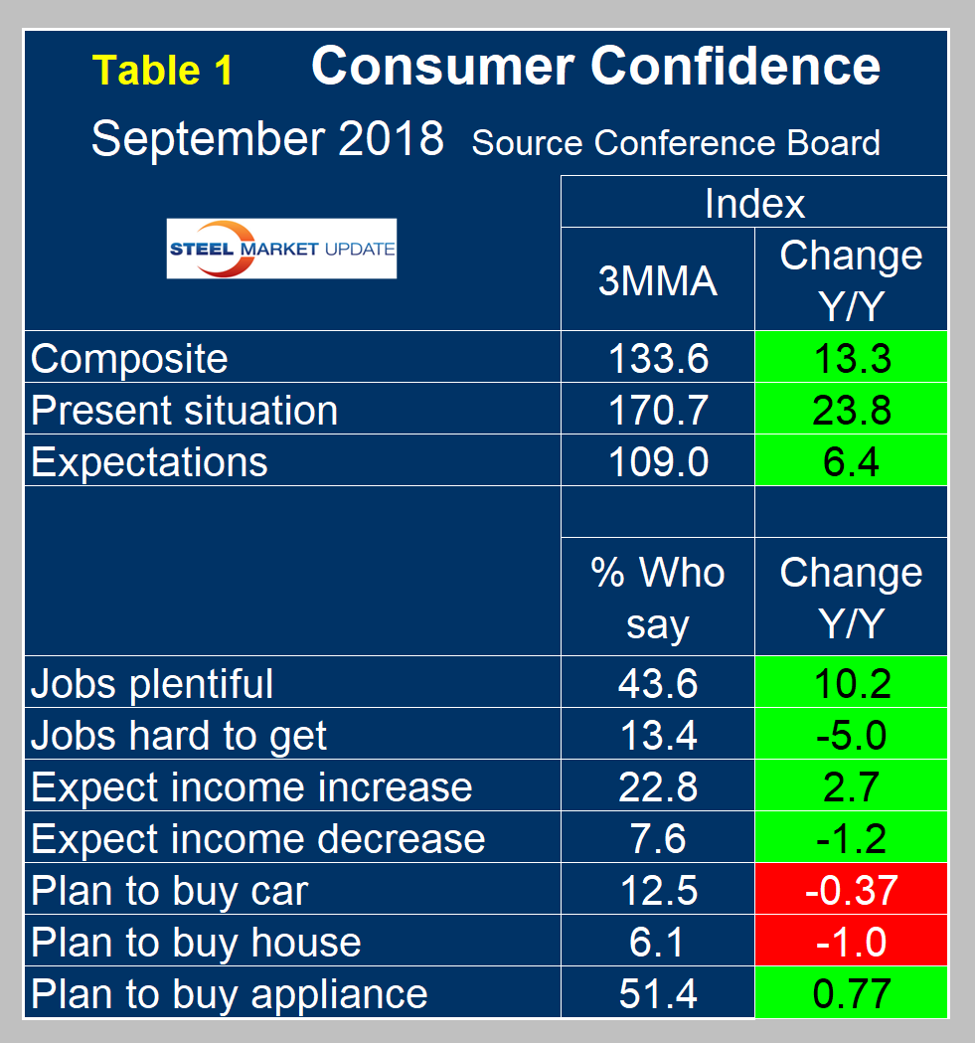
The consumer confidence report includes encouraging data on job availability and wage expectations. It reports on the proportion of people who find that jobs are hard to get and those who believe jobs are plentiful, and it measures those who expect a wage increase or a decrease. Since January 2012, both of the employment components have steadily improved. The difference between the percentage of those finding jobs plentiful and those finding jobs hard to get has improved from a low of negative 40 percent at the beginning of 2012 to positive 32.5 percent in September 2018. The change in those expecting a wage increase has been less striking, but has improved from zero in early 2012 to 16.1 percent in September 2018 (Figure 3).
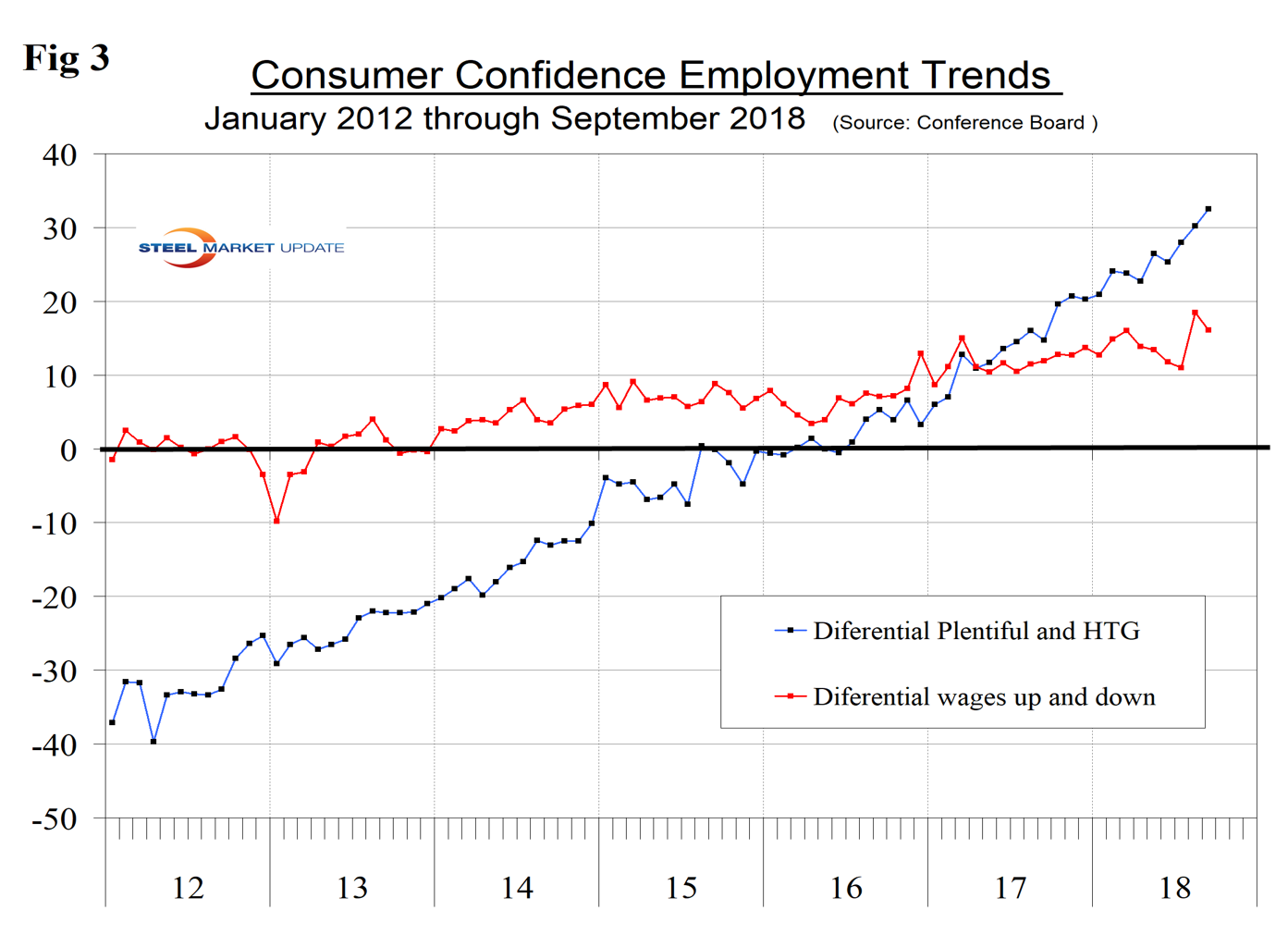
Somewhat at odds with the confidence results is that plans to buy a home, a car or an appliance have been drifting down in 2018, as shown in Figure 4.
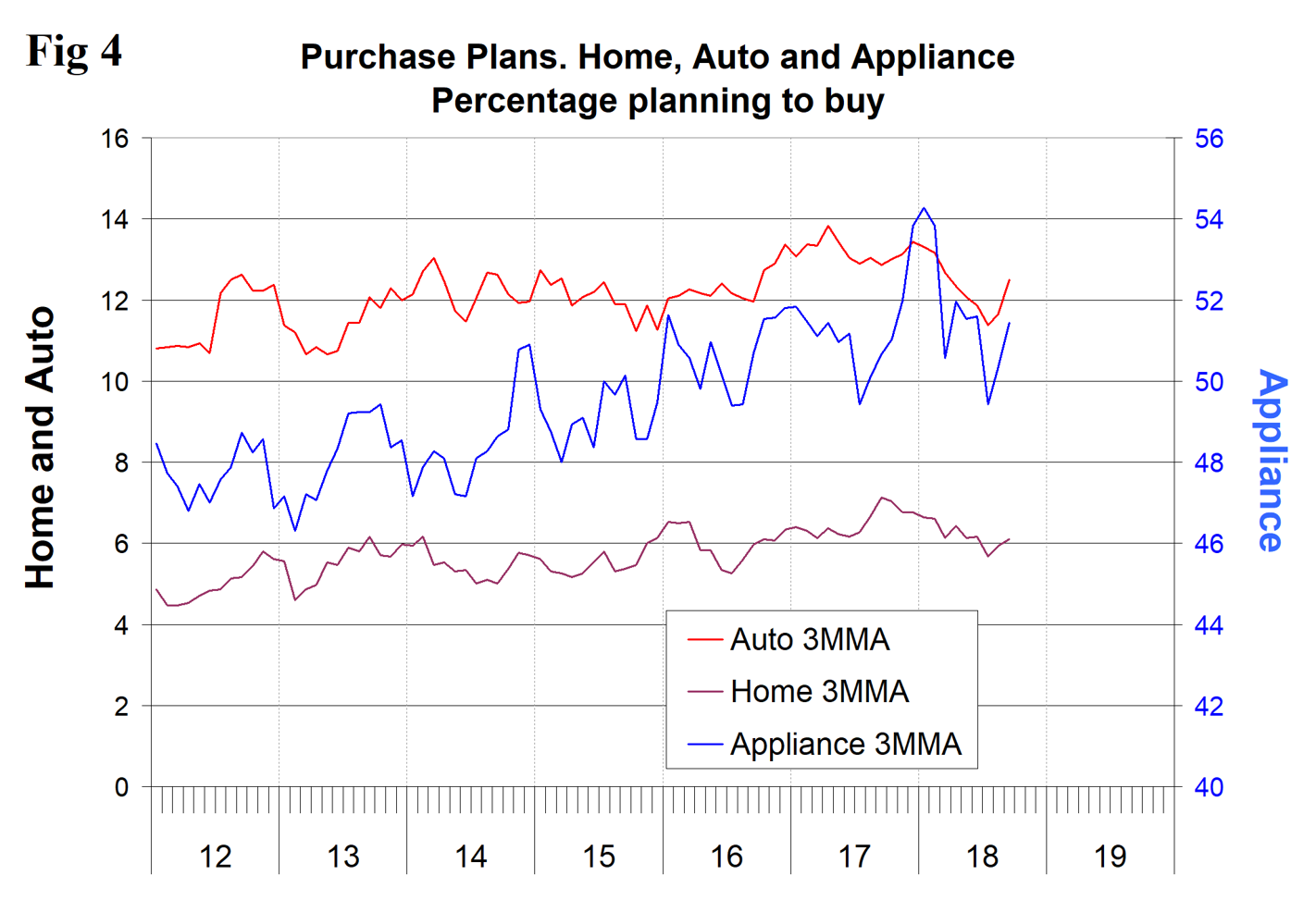
SMU Comment: Steel demand is dependent on the growth of GDP, which in turn is strongly influenced by consumer confidence and disposable income. The current consumer confidence report continues to be good in both these respects, but spending plans are contracting.
About The Conference Board: The Conference Board is a global, independent business membership and research association working in the public interest. The monthly Consumer Confidence Survey®, based on a probability-design random sample, is conducted for The Conference Board by Nielsen, a leading global provider of information and analytics around what consumers buy and watch. The index is based on 1985 = 100. The composite value of consumer confidence combines the view of the present situation and of expectations for the next six months.

Peter Wright
Read more from Peter WrightLatest in Economy

ISM: Manufacturing expansion loses steam after two months of growth
US manufacturing activity slowed in March after two straight months of expansion, according to supply executives contributing to the Institute for Supply Management (ISM)’s latest report.

Chicago Business Barometer rose to 16-month high in March
The Chicago Business Barometer increased for the third-consecutive month in March. Despite this, it still reflects contracting business conditions, as it has since December 2023.

Durable goods orders rise again in February
Transportation equipment led the increase, rising 1.5% to $98.3 billion.

Consumer confidence falls for fourth consecutive month
People remain concerned about inflation, trade policies, and tariffs.

Housing starts ticked up in February
Single-family starts last month hit a rate of 1.10 million, a month-over-month increase of 11.4%, census data shows.
